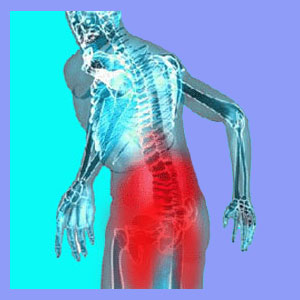
Chronic sciatica provides the enduring counterpoint to sudden and terrifying acute sciatica. Chronic pain describes symptoms which persist on and on, seemingly becoming a normal part of a patient’s life. While chronic pain might integrate itself seamlessly into your days and nights, it is never a welcome guest. In fact, chronic pain is a major contributor to physical disability, emotional hopelessness, depression, anxiety and even suicide.
This important article will provide a full profile of sciatica symptoms which become unrelenting burdens to their victims. We will examine the various types of chronic and recurrent sciatica pain, as well as detail the diversity of possible long-term expressions of the disorder.
Chronic Sciatica Explanations
Chronic back and leg pain is a condition which affects patients virtually or literally every day. The pain might be there all the time, from the first moment a patient wakes up in the morning, until the last thing they experience before sleeping at night. The pain might also come and go throughout the day, based on position or activity level.
Some patients with chronic symptoms do not have pain every day, but have regular recurrent bouts of acute sciatica attacks instead. When this occurs often enough, the condition is both acute and chronic at the same time: A double dose of torment. Generally, any patient who must endure either constant sciatica pain, or regular recurrent attacks of symptoms, already truly understands how chronic pain can destroy a life.
Chronic Symptoms of Sciatica
As mentioned often throughout this site, every patient is likely to demonstrate a unique and personalized version of symptoms. Some chronic radicular pain patients endure years of mild daily pain. Other patients suffer from regular acute episodes of blinding agony, but have few symptoms in between. Still other patients have severe constant pain which completely disables them, often limiting them to a home-bound existence.
On top of this burden, a few patients endure severe constant pain with occasional acute attacks which push their already unbearable suffering over the limits of human endurance. These poor patients are often hospitalized during the worst attacks.
Chronic sciatic nerve pain can demonstrate many characteristics. It might be dull and achy, shooting and burning, severe and limiting, variable or patterned, located in a particular area or widespread. There is simply no such thing as an “average” case profile. Sciatica is a chameleon of a pain syndrome and can reinvent itself hour by hour in some patients. However, one thing is for sure when it comes to chronic pain: it is unending, unwavering and unforgiving.
My Chronic Sciatica Story
Sciatica was one of the first dorsopathy symptoms I dealt with, dating back to the age of 16. Originally, the radicular pain condition was blamed on scoliosis and degenerative disc disease, but cleared up in a matter of months.
For several years, I did not have a large amount of daily pain, but I did suffer episodic acute attacks which would completely cripple me with severe pain and muscular spasms. After being diagnosed with 2 herniated discs in my early 20’s, the severity of the acute attacks worsened considerably.
Within a few years, I was experiencing considerable daily pain, in addition to regular acute flare ups. As my condition progressed, the chronic pain got worse every day, but the acute attacks decreased in regularity. Instead, the pain was simply there all the time and became the focus of my life. Looking back, now I completely understand how and why my pain changed. I understand why it eventually became my controller and why I could never cure it with the wide variety of sciatica treatments I attempted. Chronic misery is a condition with which I am intimately acquainted. Decades of relentless pain have honed my will more than ever before to help myself and help others to overcome their own chronic nightmares.





